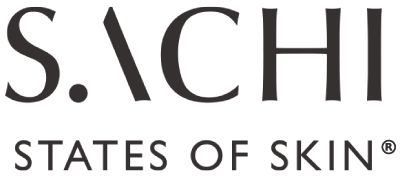10 min read
Dark spots and blemishes make up most of our skin concerns. Add sensitivity and redness issues into the mix, and our skin challenges are amped up even further. Skin redness can arise from sensitive, sensitised and reactive skin phases that make you look blotchy and angry and lead to feelings of skin discomfort. But first, 'sensitive', 'reactive' and 'sensitised' - what does all this mean?
To truly keep flushed skin at bay, you need to understand where it comes from. Then, you can choose the best soothing ingredients to keep your skin happy and even-toned. So let us first deep dive into some definitions.
The skin barrier and skin sensitivities
The skin barrier is the first line of defence between our skin and external factors. External factors include more than just the environment. Our skin is also susceptible to damage from our own lifestyle habits, hormonal changes, genetics and even skincare (when used inappropriately). And when this damage to the skin barrier occurs, our skin responds with redness, discomfort, itchiness, swelling, tightness, dryness and when it happens often, we call it our skin sensitivity.


Sensitive, Sensitised and Reactive skins: where does it all stem from?
We at Sachi Skin believe sensitivity can be a state not a type. Why? Because your skin evolves over time. For instance, some may find that having milk allergies is the cause of their skin discomfort, and removing milk from their diet alleviates their skin sensitives. Some may find that they have inflammatory skin concerns like rosacea and eczema only at some moments in their life and not all the time, or have family history of eczema (genetics related). Some may find that certain products like harsh exfoliants lead to sensitisation (behaviour related) while others may find the harsh wind and cold outdoor climates (environment related) aggravates their skin in winter. All of these issues arise from a compromised skin barrier, which can occur due to a wide range of reasons as we will discuss ahead.
So where does skin redness come from?
Wonder where the redness comes from? From blood of course! But the real question is, what triggers excess blood to travel to the surface of the skin? Our skin is constantly working to keep itself at its best working condition. So when any damage occurs on the skin, blood is sent to the surface to help with healing. But some skins, due to habitual, environmental or genetic differences, have a weaker skin barrier, making them more prone to damage. Thus they need regular supplies of blood to constantly heal itself on a regular basis - leading to hyperreactive skin that sees red often.
Your skin may be in a prolonged or temporary sensitive phase, caused by fluctuating external conditions and lifestyle habits. Either way, the best course of action would be to identify the triggers that cause these persistent redness, irritations and sensitivities and seek ingredients that help calm the skin down.


Triggers for skin redness and sensitivities
Improper skincare use
Perhaps you have started using a new skincare product, or maybe your skin tolerance has changed. There are many ways by which your skincare can be the culprit of your irritated or flushed complexion. This is where you will need to take a step back. To start, simplify your skincare routine to just the essentials - cleanser, moisturiser and sunscreen, making sure not to over-cleanse. Then, work in additional products day by day to narrow down the trigger. Sometimes, just having too many layers is the problem. Consider a streamlined routine with multitasking products to cover all concerns you wish to address.
One more thing we always emphasise is that consistency over strength works best when taking care of your skin. Do not opt for high strength products that put your skin are the risk of flare ups. This can set your skin back by months. Take things slowly and incrementally. Skin health is a marathon, not a sprint. Let’s treat it with respect and work products in our routines slowly. Also, it helps to be wary of some ingredients that are common skin sensitisers. Think, low pH ingredients like Vitamin C, Lactic Acid, Retinoids, Scrubs etc. Pay extra attention to these; keep their frequency of use at a minimum until your skin builds up its tolerance.
Sun damage
UV rays from the sun enter the skin and create free radicals that cause damaging chain reactions in the skin, weakening the skin barrier. In response to this, blood rushes to the skin surface to aid skin repair, leading to redness. So it is crucial to always avoid direct sunlight exposure and always be armed with sunscreen during the day, But if the damage is already done, barrier-supporting ingredients can still help to revive the skin.
Air pollution
Pollution also creates damaging chain reactions in the skin, owing to the presence of free radicals in the air. This reaction is also called oxidative stress and it is possible to fight back, with the use of antioxidants. They neutralise free radicals in the skin, halting their effects and helping the skin remain at its healthiest state.
Extreme temperatures
Changing seasons or travelling to a new country means there is a drastic change in your physical environment. A sudden change in environment is never good news if you have sensitive skin. When you know a winter chill or summer heat wave is coming, remember to be prepared. Hydrate your skin and lather up on moisturiser to keep your skin barrier protected.
Hormonal changes
Some skin triggers can be invisible at times. Hormonal changes, like the ones you experience at your time of the month, during pregnancy or during menopause can have a huge impact on your skin. This is due to the hormone, estrogen, that plays a key role in the Collagen, Elastin and Hyaluronic Acid levels in the skin. These components are crucial in the functioning of the skin barrier. Thus, it helps to be aware of hormonal changes when managing sensitive skin and seek medical advice where necessary to balance and manage any periods of fluctuations.
Lifestyle choices
Irregular sleep cycles, smoking, alcohol and other lifestyle habits can throw the skin out of balance, hindering its ability to defend itself. This leads to heightened sensitivity to the triggers above.
These triggers essentially boil down to skin barrier protection. Here is our article on Defence and Repair Ingredients your skin needs to help keep sensitivities at bay and how to address redness for a stronger skin barrier, that is more resilient against daily damage and triggers.



